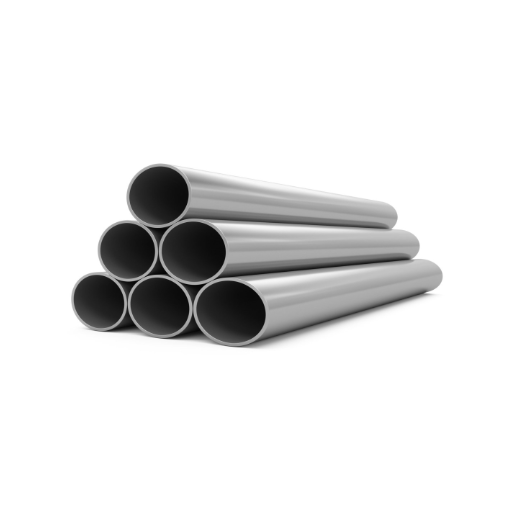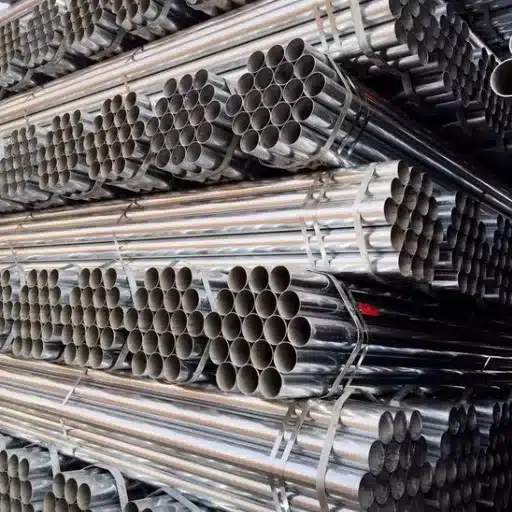When it comes to selecting the right materials for industrial, commercial, or even residential piping systems, choosing the correct type of pipe is a critical decision. Among the most commonly used options are 304 stainless steel pipes and seamless pipes, each with unique characteristics and specific applications. However, understanding the nuanced differences between these two can be challenging without the proper technical knowledge. This article aims to demystify these distinctions, providing a comprehensive comparison to help you make informed decisions tailored to your project needs. Whether you’re designing a high-performance system or optimizing cost-efficiency, this guide will clarify the key factors separating 304 stainless steel pipes from seamless pipes.
What Are the Characteristics of 304 Stainless Steel?
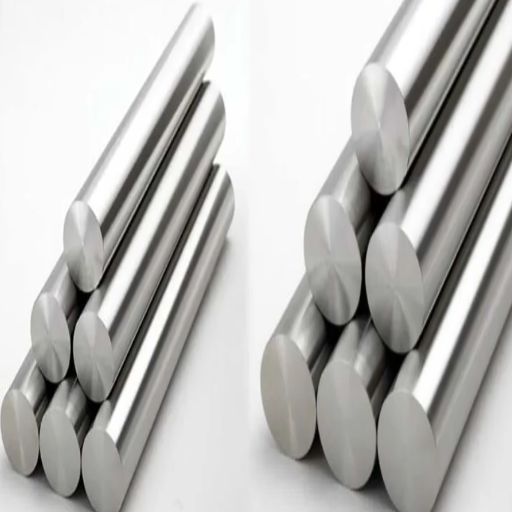
What Is the Chemical Composition of 304 Stainless Steel?
The main iron-based constituents of 304 stainless steel are chromium, nickel, and iron, with additional elements present in trace amounts to improve its properties. In particular, 304 stainless steel is known to contain 18-20% chromium and 8-10.5% nickel by weight. These two ingredients are essential in granting the alloy effective corrosion resitance as well as durability and thus make it useful for diverse purposes.
In addition, 304 stainless steel has a max of 2% manganese, max 0.75% silicon, and a small quantity of carbon not greater than 0.08%. These components enhance its mechanical strength and weldability. Also, It contains small amounts of phosphorus and sulfur up to 0.045% and 0.03% respectively which are controlled to optimum levels in order to achievement the desired material characterisitcs.
The alloy’s composition is by ASTM A240/A240M, thus ensuring uniformity and quality throughout the manufacturing processes. Such balance makes 304 stainless steel an essential material in construction, automotive, food processing, and medical equipment industries where high strength and corrosion resistance is critical.
How Does Corrosion Resistance Work in 304 Stainless Steel?
The high chromium content of stainless steel 304, which is between 18 and 20%, is what gives it its highest corrosion resistance. Instead of metallic chromium, the oxide is in balance with the surrounding oxygen and covers the surface as a thin, stable-passive layer. This layer provides sufficient protection for the underside metal against oxidation as well as corrosive substances like moisture, acid, and salts.
Moreover, 304 stainless steel has nickel content ranging from 8 to 10.5%. This achieves durability and resistance to corrosion even in mildly acidic or alkaline environments. It also enhances the passive layer in the environment during heating or mechanical changes, which increases stress on the material.
Moisture and passive cover the material to enhance the corrosion resistance of 304 stainless steel, but conditional resistance depends on environmental factors, the most important of which are the amount of chlorides and exposure to high temperatures. While the material performs reasonably in many scenarios, harsh environments like elevated chlorides can lead to localized pitting and crevice corrosion. Mitigating these design considerations and corrosive conditions during maintenance can provide longevity to the material in harsher demanding applications.
What Makes 304 an Austenitic Stainless Steel?
Due to its specific chemical composition, such as Iron, Chromium, and Nickel, 304 stainless steel is classified as an austenitic stainless steel. The chromium content of 304 must be at least 18%, and the Nickel at least 8% to retain the austenitic (face-centered cubic) microstructure that 304’s stainless steel possesses at all temperatures. This arrangement is important for the alloy’s mechanical properties, like ductility, toughness, and considerable deformation without fracture, which is termed as shear strength.
Like all other types of Austenitic stainless steels, grade 304 is characterized by superior corrosion resistance and non-magnetism. Also, it has great weldability. Nickel has an exceptional contribution to the alloy. He ensures the retention of austenitic structure and thus stops the development of ferrite or martensite, which usually happens under normal processing conditions. On top of this, the chromium part forms a passive oxide layer on the surface, preventing oxidation and corrosive destruction in different environments.
An additional distinguishing characteristic of 304 stainless steel as an austenitic alloy is its low carbon content, which typically is 0.08% or lower. This guarantees resistance to carbide precipitation during welding or when exposed to elevated temperatures, thus minimizing the likelihood of intergranular corrosion. In general, the chemical composition and metallurgy of 304 stainless steel meet the requirements for an austenitic classification, which renders it a widely used material in many industries.
How Is a Seamless Pipe Manufactured?
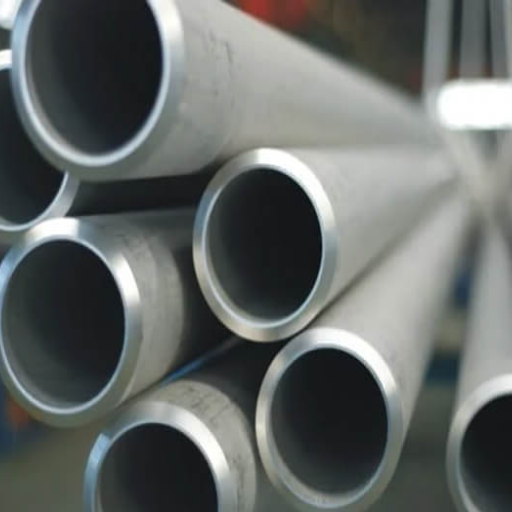
What Is the Manufacturing Process of Seamless Pipe?
Seamless pipes are manufactured using strong modern processes and metallurgy, which allow for the production of high-strength pipes that are mechanically superior and pressure resistant. The manufacturing process starts with a solid steel pipe that contains a billet, then gets hot worked with a temperature of more than 2192°F ,1200 degrees Celsius. During the first phase, the heating steel ‘billet’ goes under a rotary piercing mill which pierces the pipe. After this, the bar tube is sent to plug mills where it is passed through various rolling and elongation processes until the proper diameter is achieved.
After achieving the proper diameter, the pipe is then sent to mandrel mills, or pilger mills which ensure the proper thickness of the pipe wall. Once the tube is elongated, the tube is then cooled gradually and undergoes normalizing or annealing procedures. These methods are essential for improving the mechanical properties and micro structure of the metal to further enhance the final results.
Last, the piping goes through a strict and precise quality control, where its dimensions are checked, it is nondestructively tested (ultrasonic or eddy current testing), and hydrostatic pressure tests are performed to check for any leaks internally and externally. Due to their high strength, seamless pipes are used in the oil and gas industry, power generation, and chemical processing industry. This careful manufacturing process makes sure that the pipe will provide dependable, lasting service and will perform in demanding applications.
How Does Extrusion Play a Role in Seamless Pipe Production?
Extrusion is an industrial process for seamless pipe construction, forming uniform and strong cylindrical pipes without welds or junctions. The extrusion process starts with a solid cylindrical carbon steel, stainless steel, or alloy billet, selected based on application requirements. The billet must first be heated to a set temperature to ensure adequate plasticity while retaining material characteristics. After achieving the correct temperature, the billet will be forced into the die cavity of an extrusion press, which shapes the billet to a desired diameter and thickness.
A hollow center with a consistent internal diameter will be created by the piercing mandrel. This method of extrusion not only alleviates common defects associated with welded pipes, like weld cracks and porosity but also enhances uniformity and strength due to the structure’s internal grain pattern. These attributes help seamless pipes withstand harsh, high-pressure, and high-temperature conditions.
Pipes and tubes can be manufactured or produced with great accuracy because of seamless pipe production technology, CAD (Computer-Aided Design), and automation tools. These tools boost productivity and enable manufacturers to meet the needs of many different sectors, such as aerospace, petrochemical, and power generation, by offering high-quality products with better surface finishing.
What Are the Benefits of a Seamless Pipe?
Because of their enhanced mechanical properties and structural soundness, seamless pipes have several benefits for industrial applications. Unlike welded pipes, seamless pipes do not have a seam or welded joint, which significantly decreases the chance of failure from enduring pressure or fatigue over time. This allows seamless pipes to be safely used in high-pressure environments like oil and gas pipelines or hydraulic systems.
Moreover, seamless pipes have uniform strength across their cross-section, which offers better resistance to distortion, cracking, and corrosion. Seamless pipes can endure high temperatures and strong dynamic forces, making them preferred for power plants, petrochemical industries, and aerospace systems. In addition, seamless pipe manufacturing guarantees no excess material will be left, smoother inner surfaces to the pipes, precise measurement for width and wall thickness, which improves water flowing efficiency and lowers chances of internal build-ups or blockages.
Due to the use of some alloys and the latest advancements in production techniques, seamless pipes can now meet strict industry requirements. Because of these critical factor,s where safety, longevity, and performance are extremely crucial, these pipes have become the go-to option.
What Is the Difference Between SS 304 Seamless and Welded Pipes?
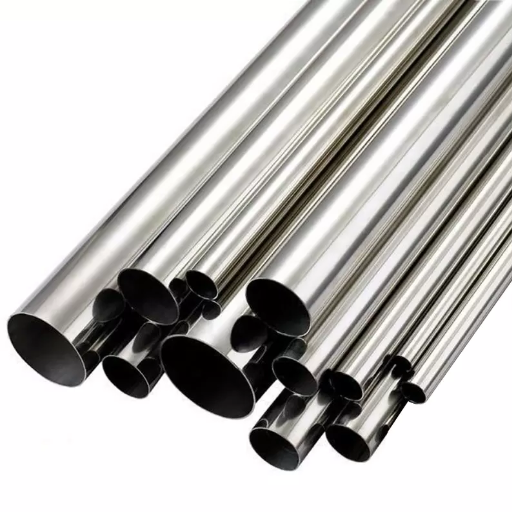
What Are the Strengths of Seamless Pipes Compared to Welded?
Seamless pipes have a host of benefits that make them better than welded pipes for seamless operations. A key advantage is their longitudinal uniform strength and structure. Unlike welded pipes that potentially have a seam which could act as a weak point, seamless pipes are devoid of joints which makes them better resistant to mechanical and pressurised stress. This makes them ideal for high pressure applications, like in oil and gas pipelines or in hydraulic systems.
Seamless pipes tend to possess better homogeneous construction corrosion resistance compared to other types of pipes. Areas prone to localized corrosion do not exist due to the absence of a welded seam, which ensures consistent performance under harsh marine chemical processing industries. Their improved resistance to harsh environments means that their service life increases while maintenance requirements and operational downtimes are greatly reduced.
Seamless pipes have smooth inner and outer surfaces, which lead to enhanced fluid flow and effortless seamless interactions. This feature is crucial in components like heat exchangers or along boiler tubes where precision and rapidity are critical. They are the go-to option when extreme temperatures, high pressures, and harsh chemicals are involved, if performance and reliability are needed, because of seamless pipes’ unmatched capabilities and reliability.
How Does the Welded Seam Affect Performance?
A welded seam presents both advantages and disadvantages when analyzing the performance of pipes. Alongside their seamless counterparts, welded pipes have their fluid dynamics altered due to the welding seam. In the modern era, welded pipes achieve great durability and dependability as a result of modern advancements in inspection technology and welding techniques, including nondestructive testing. Consequently, most welded pipes now surpass the requirements bound by rigid industrial standards.
While factors such as heat stress relief and smoothing take place post-weld, this retains the irregularities the seams have; the internal surface is not round, becoming the borderline for uneven shapes. These differences are inconsequential when examined on most pipes, but on high-precision ones, these irregularities can disrupt flow uniformity. Despite this technological flaw, automatic welding is more advanced now, thus, the degree of difference between welded and seamless pipes’ performance is minimal.
Research shows that seamless pipes work better than welded ones in cases of extreme stress, harsh chemicals, or cyclic loading because they have no weak seams. However, glued pipes are more readily available and cost-effective, even though they perform poorly under stress. Therefore, the selection of welded vs seamless needs to align with the specific operational requirements so as to not compromise performance, longevity, or costs.
When Should You Choose a Seamless Pipe?
A seamless pipe should be selected in scenarios that require high-pressure handling, extreme strength, and dependability under harsh conditions. Seamless pipes are especially suitable for the oil and gas, petrochemical, and power generation industries where high temperatures and corrosive environments or cyclic loading occur. Because these pipes lack weld seams, they have a more uniform structure, which reduces the chances of stress-related failures due to material weakness or flaws. For instance, seamless pipes are more effective and resilient than other options in pipeline systems containing highly hazardous fluids under great impact forces.
Seamless pipes are crucial for industries that have rigid security and operational restrictions. For example, aerospace engineering uses seamless pipes extensively in hydraulic systems to maintain control and endurance during different flight conditions, which enables them to operate precisely and smoothly. Additionally, boilers, pressure vessels, and heat exchangers rely on seamless pipes since they require sustained operational integrity over time.
As with any engineering design, seamless pipes are chosen based on the engineering criteria, legal considerations, and the surround operations in order to achieve the desired cost without compromising safety or functionality.
What Are the Applications of Stainless Steel 304 Pipes?
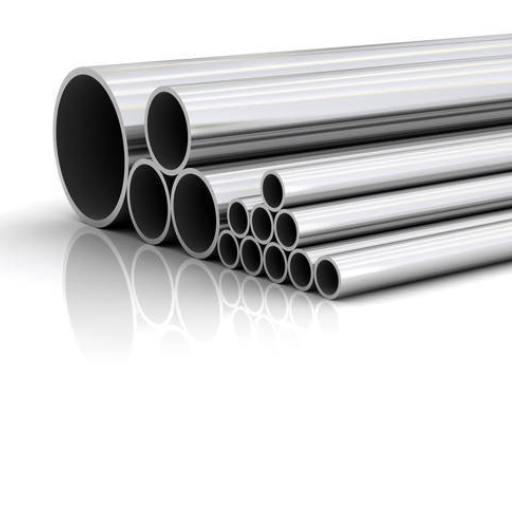
How Does High Pressure Influence Pipe Selection?
High pressure greatly influences the required piping materials along with other design specifications to guarantee dependability, safety, and adequate performance. Piping for high-pressure systems requires, at minimum, superior mechanical strength, deformation, fatigue, and rupture resistance. Typically, steels such as stainless alloy steels are selected due to their structural stress endurance and performance within high-pressure environments. Stainless steel 304 is often selected due to its corrosion resistance and tensile strength of 515 MPa, making it suitable for pressurized petrochemical and food processing systems.
Thickness or schedule poses critical issues at the design phase for sustaining high pressure. Per ASME B31.3, increasing wall thickness helps mitigate axial tensile hoops or circumferentially positioned compressive pressure hoop stresses tangentially acting on the pipe walls. Moreover, seamless pipes are preferred to welded ones for high-pressure applications due to the presence of uniform pipes free from welded joints, which could fail under stress.
As an example, 10,000 PSI application pipes are tested with other safety margin tests, such as hydrostatic pressure tests, confirming complete compliance. In addition to these issues, the presence and temperature of the environment, especially reacting chemicals, as well as abrasive or corrosive substances, impacts material selection and design to sustain structural integrity throughout operational life.
What Role Does a Corrosive Environment Play in Application?
Corrosive environments affect the selection, design, and maintenance of piping systems because they influence the degradation of materials and the operational life. The rate of corrosion increases when pipes are subjected to harsh conditions, including high salinity, acidic compounds, or extreme temperature and humidity changes. Corrosion can also result in reduced wall thickness, loss of structural integrity, and eventual failure, which in turn can result in costly downtime or hazardous incidents.
In an attempt to mitigate these issues, more sophisticated alloys such as stainless steel and duplex steels or non-metallic composites are used. These materials offer better resistance to certain types of corrosion, including pitting, crevice corrosion, or stress corrosion cracking, but only if the specific environmental factors are favorable. In addition, protective coatings along with cathodic protection systems also increase the lifespan of piping systems in harsh conditions when combined with regular inspections using non-destructive testing (NDT).
Modern computation techniques coupled with available engineering data enable the assessment of environmental conditions and predict the corrosion rate, thereby allowing engineers to proactively adapt designs. The use of these technologies guarantees that the piping systems are performant under high stress and corrosive conditions while being safe, thereby reducing safety risks while optimizing operational efficiency.
How Does 304L Compare to 304 Stainless Steel Pipe?
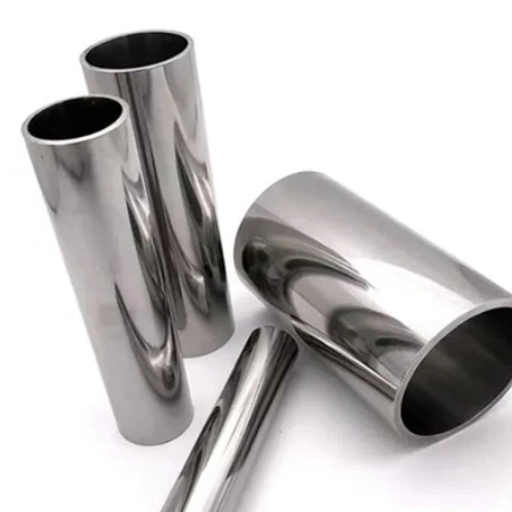
Is There a Difference in Corrosion Resistance?
Due to differing chemical compositions and specific applications, there is a difference in corrosion resistance between the 304L and 304 stainless steel pipe. Both grades are austenitic stainless steels with excellent corrosion resistance, but 304L has a lower carbon content (0.03% max) than 304 (0.08% max). The lower carbon content improves intergranular corrosion resistance during the welding and high temperature exposure processes, where carbide precipitation poses a threat.
The 304L stainless steel grade is better for use in aggressive corrosive environments such as chlorides or acidic media due to constant attacks. Laboratory tests as well as field data validates that 304L’s resistance to localized corrosion such as pitting and crevice corrosion is greater, particularly at welds where thermal cycling would damage the structural integrity of 304 stainless steel.
Based on these details, less severe conditions such as low moisture or mildly corrosive setting; the resistance to corrosion of 304 and 304L is similar. The choice most often hinges on the physical and functional features of the application, rather than an apparent difference in chemical behavior. It is important to understand the operational temperature when choosing a suitable material.
How Do Their Applications Differ?
The uses of 304 and 304L stainless steel differ mainly due to the associated performance-related carbon content of each grade. Both grades are widely accepted in places where durability and corrosion resistance are a requirement; however, 304L is specifically preferred for heavily welded applications due to its lower carbon composition. The lower carbon content minimizes the risk of intergranular corrosion due to carbide precipitation at high temperatures. This characteristic makes 304L the best candidate for heat exchangers, chemical processing equipment, and storage tanks that require extensive welding.
On the contrary, standard 304 stainless steel attracts frequent attention for use in structural applications, machinery, and other components which require higher tensile and yield strength, and lesser welding. It is also used in kitchen appliances, automotive parts, and architectural paneling because of its superior mechanical properties and resistance to the atmosphere and weak chemical environments.
Engineers differentiate between 304 and 304L grades according to an application’s specific features, such as demanding operational conditions—extreme temperatures, corrosive environments, and extensive welding—because both grades exhibit similar nominal corrosion resistance. This differentiation helps designers and engineers make informed decisions regarding materials in terms of durability, efficiency, and expenses.
References
-
Solitaire Overseas: Difference Between SS 304 Seamless Tube and SS 304 ERW Tube – This source explains the manufacturing processes, strength, and applications of SS 304 seamless and ERW tubes.
-
Simplex Fittings: Difference between Seamless & Welded Stainless Steel Pipes – This article discusses the performance, pressure capacity, and strength differences between seamless and welded stainless steel pipes.
-
Superlok World: Stainless Steel Tubing: Welded Vs. Seamless – This blog highlights the cost, production time, and structural differences between welded and seamless stainless steel tubing.
Frequently Asked Questions (FAQ)
Q: What is the main difference between 304 stainless steel pipe and seamless pipe?
A: The main difference between 304 stainless steel pipe and seamless pipe lies in their manufacturing process. A 304 stainless steel pipe can be either welded or seamless, while a seamless pipe is specifically made without any welds. The seamless pipe is produced by extruding a solid stainless steel billet through a die to form a hollow tube.
Q: How is a stainless steel seamless pipe made?
A: A stainless steel seamless pipe is made by taking a solid stainless steel billet and extruding it into a hollow tube. This process involves heating the billet and passing it through a series of dies to create a seamless steel pipe without any welded joints.
Q: What are the advantages of using stainless steel seamless pipes?
A: Stainless steel seamless pipes offer several advantages, including higher strength, better resistance to pressure, and a smoother surface finish compared to welded pipes. They are also less likely to have weak points, as there are no welded seams.
Q: What is a 304 seamless pipe?
A: A 304 seamless pipe is a type of stainless steel seamless pipe made from 304-grade stainless steel. It is known for its corrosion resistance, durability, and ability to withstand high pressures and temperatures, making it suitable for various industrial applications.
Q: What is the role of nickel in 304 stainless steel seamless pipes?
A: Nickel is an essential component in 304 stainless steel seamless pipes, contributing to their corrosion resistance and toughness. It enhances the steel’s ability to withstand harsh environments and maintain its structural integrity over time.
Q: How does the manufacturing process affect the properties of ss 304 pipes?
A: The manufacturing process significantly affects the properties of ss 304 pipes. Seamless pipes are made without welds, providing uniform strength, while welded pipes may have weaker points at the seams. The seamless process also results in a smoother interior surface, which can improve flow and reduce the risk of corrosion.
Q: What are the common uses of ss 304 seamless tubes?
A: SS 304 seamless tubes are commonly used in industries such as oil and gas, chemical processing, food and beverage, and pharmaceuticals due to their excellent corrosion resistance and strength. They are also used in structural applications where high integrity and reliability are required.
Q: What is the difference between ss304 seamless and ss304 erw tube?
A: The difference between ss304 seamless and ss304 ERW (Electric Resistance Welded) tube is in their manufacturing processes. SS304 seamless tubes are made by extruding a solid stainless steel billet into a tube, whereas SS304 ERW tubes are made by welding the edges of a flat steel strip to form a tube. As a result, seamless tubes generally have better mechanical properties and are preferred for high-pressure applications.
Q: Why are seamless tubes used in critical applications?
A: Seamless tubes are used in critical applications because they offer greater reliability and strength compared to welded tubes. The absence of a welded seam eliminates the potential for weak points, making seamless tubes ideal for high-pressure and high-temperature environments where safety and performance are crucial.
Q: What are the steel pipe fittings used with 304 stainless steel seamless pipes?
A: Steel pipe fittings used with 304 stainless steel seamless pipes include elbows, tees, reducers, and couplings. These fittings are made from compatible materials to ensure a secure and leak-free connection, maintaining the integrity and performance of the piping system.

